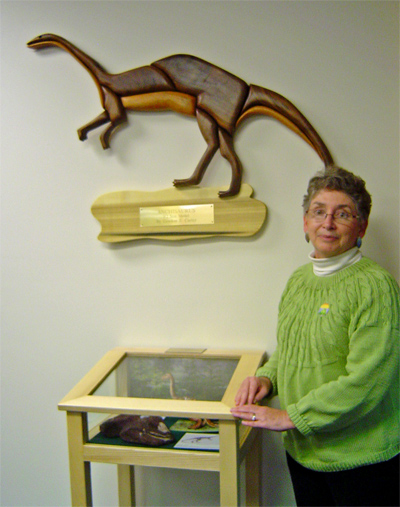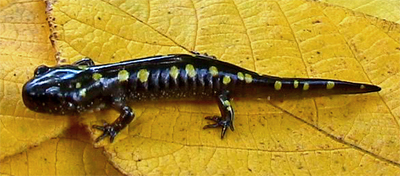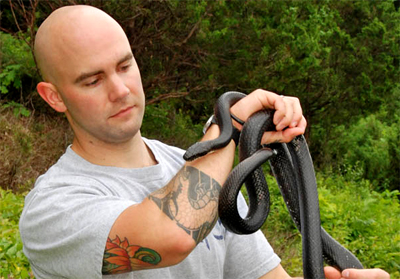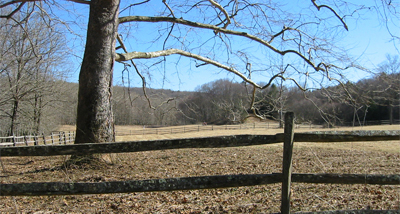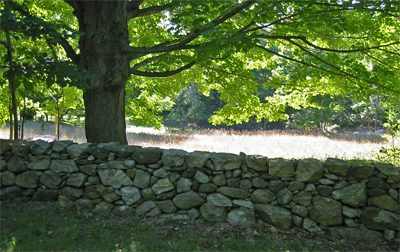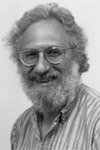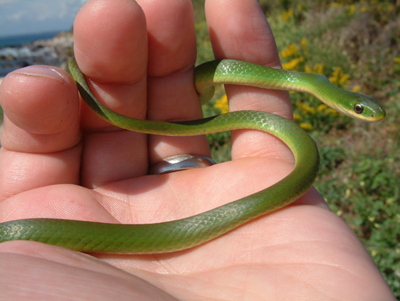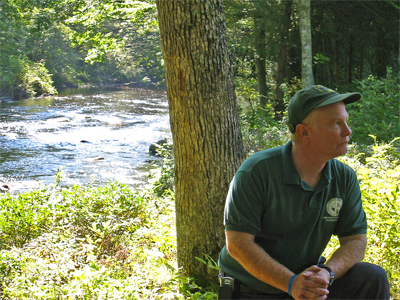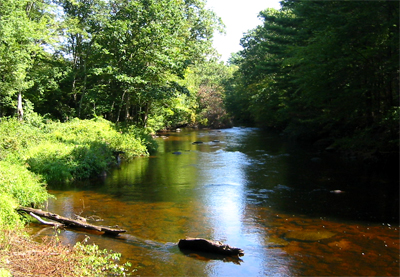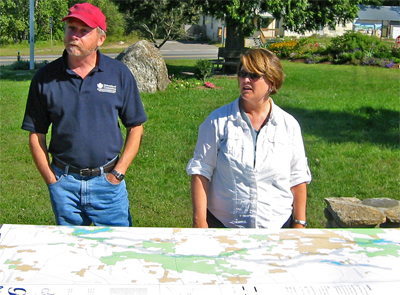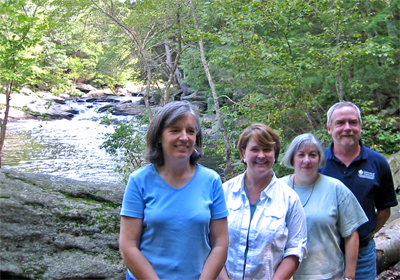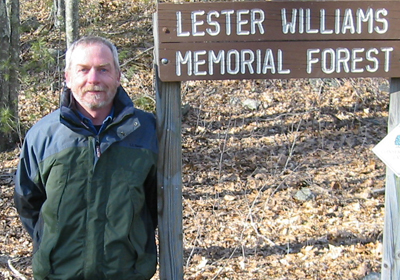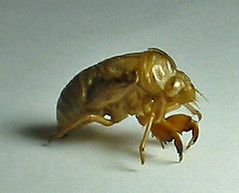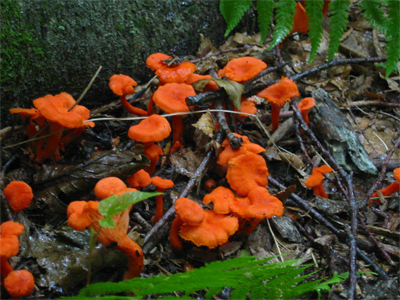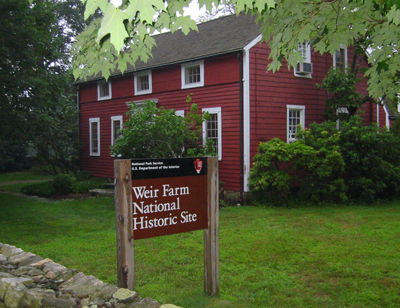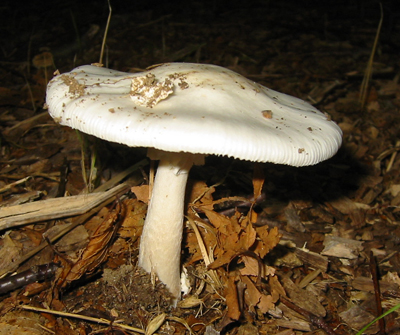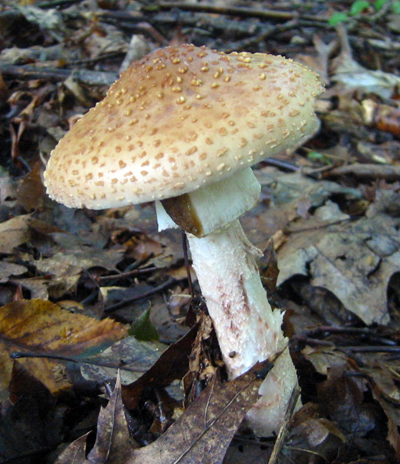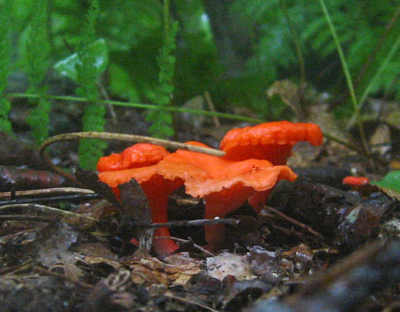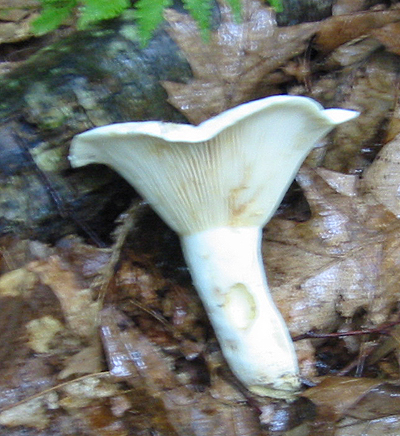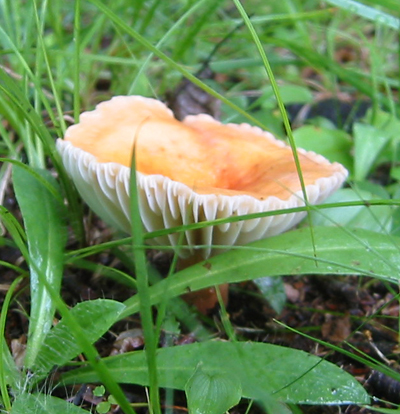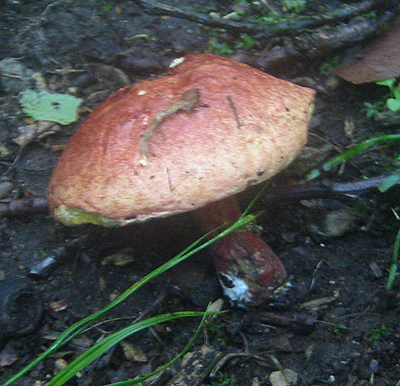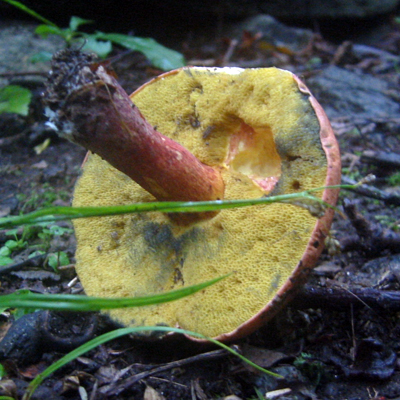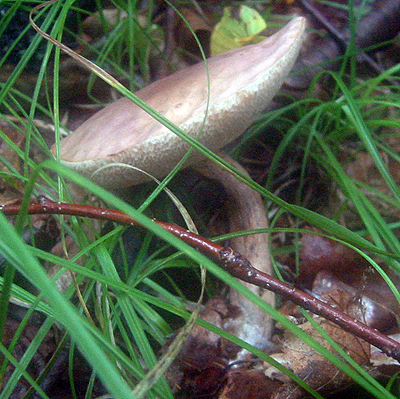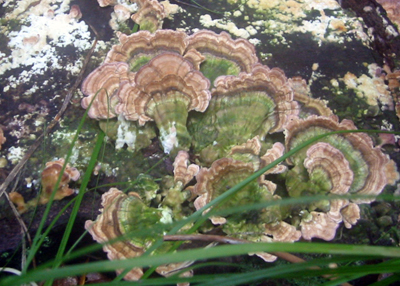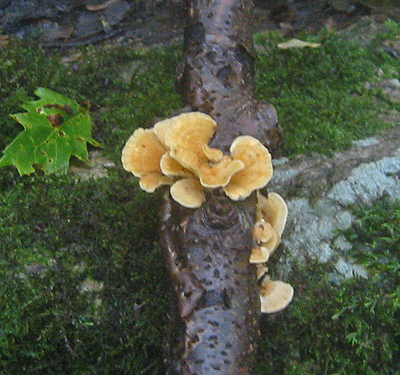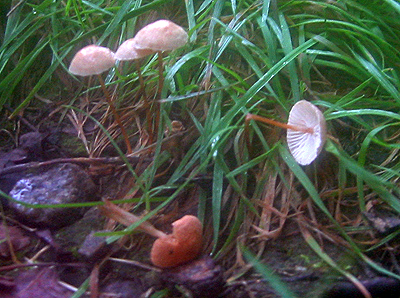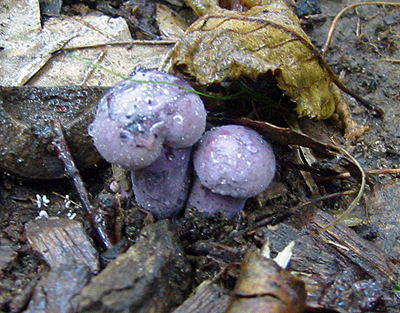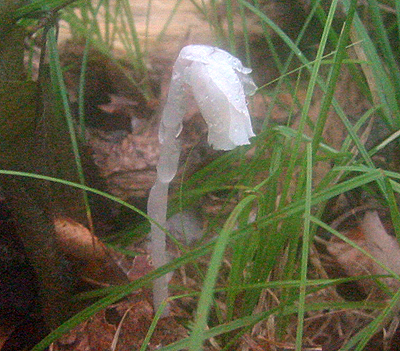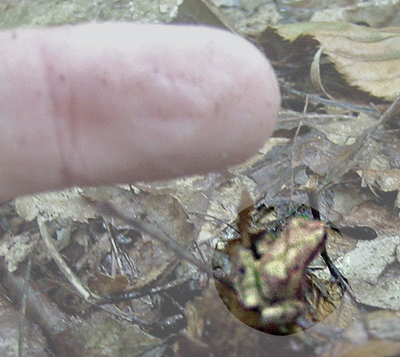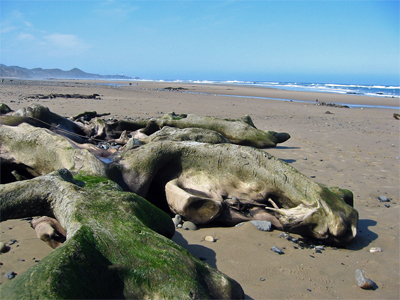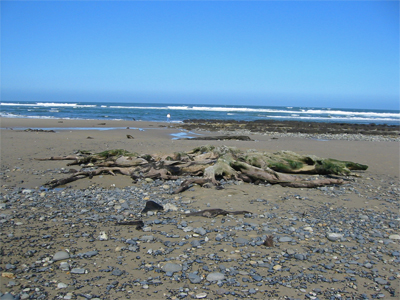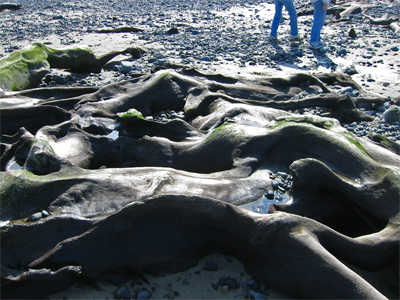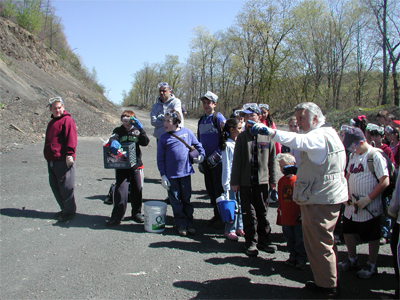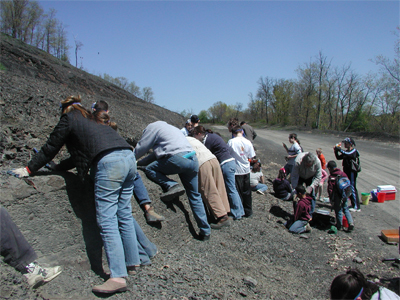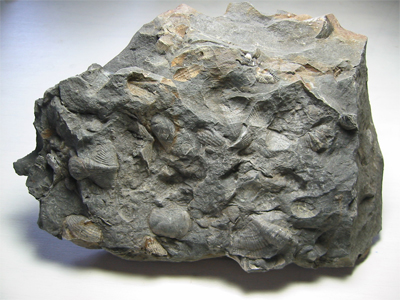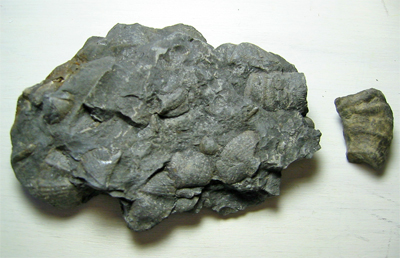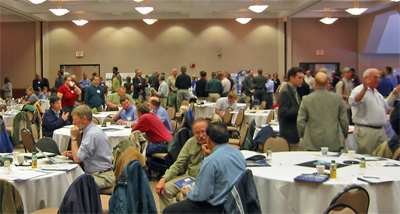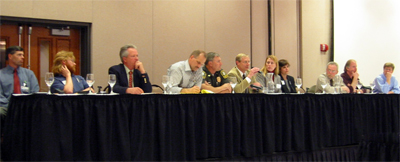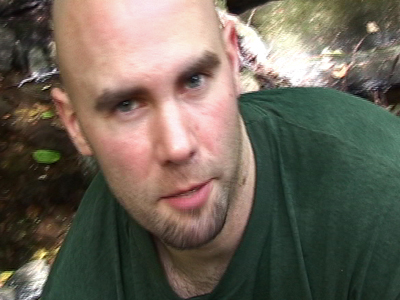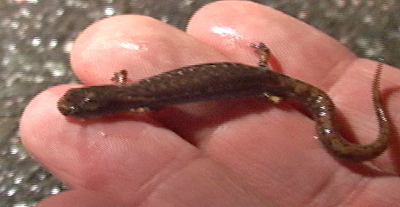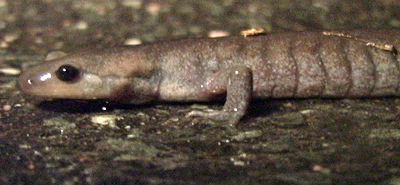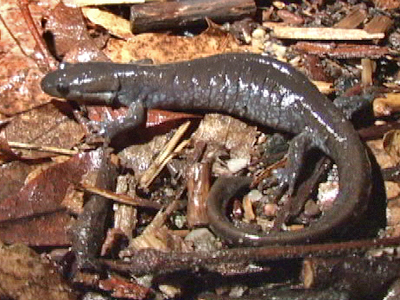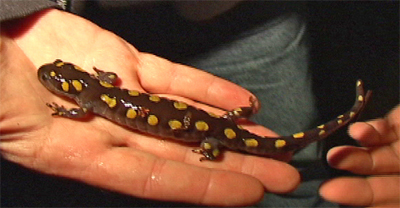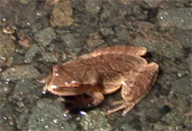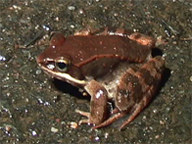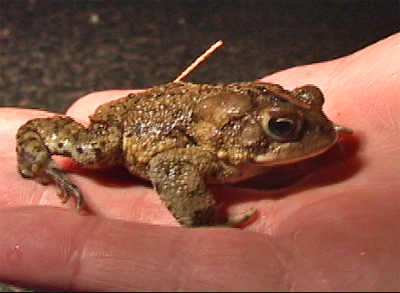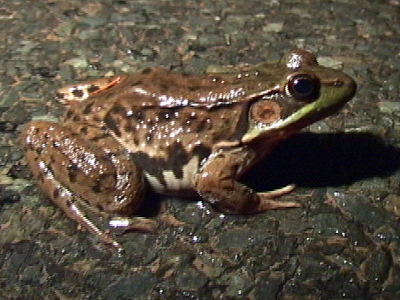Stamford, CT--Ask Dr. David Skelly how Connecticut’s frogs are doing and he’ll tell you there are more questions than answers.
Horrific deformities have become increasingly common among frogs over the past decade or so--to the point that missing, deformed or shrunken limbs (and worse) have now been reported among frogs in 46 states across the US. According to Dr. Skelly, no such deformities have shown up in Connecticut (except for a 1997 incident where a boy collected 60 deformed frogs from Porter Pond in Sterling), but cases elsewhere in New England ought to get our attention.
Originally a local kid who grew up fascinated by frogs,
Dr. Skelly has made the search for causes of amphibian deformities a major focus of his work as an ecologist and professor at Yale University’s School of Forestry and Environmental Studies.
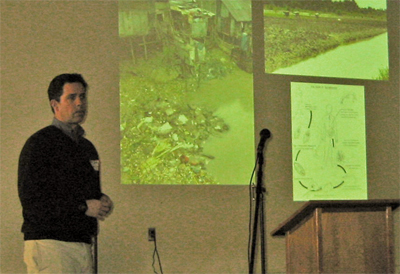
Dr. Skelly spoke about his work at the Harry Bennett Branch Library in Stamford recently for members of the
Mianus River Watershed Council.
“TV frogs:” A nature-horror show
Frog deformities became front page news in 1995 after a group of
school kids in Minnesota went on a field trip to look at pond ecology and found nearly a dozen leopard frogs with twisted, missing or extra limbs. The sight of such monsters led many to wonder if whatever was causing frogs to grow extra legs and withered stumps might have similarly freakish effects on people.
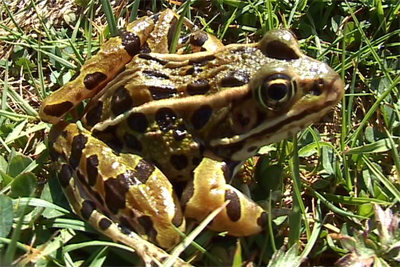
A healthy Leopard Frog photographed in Connecticut last summer. Photo by
Brian Kleinman.
Scientific research into the phenomenon has since focused on fungal infections, microparasites, human environmental impacts and pollution (i.e. “something in the water”) as possible causes. A notably innovative study pointed to several quite nasty little parasites, flatworm type things whose life cycles conjure up sci-fi imagery, and led to the worms being tagged as the leading pathogens causing frog deformities.
The parasites look for ways to crawl inside potential hosts. Once in, they lodge in the host’s internal organs. When the worms find their way into frog tadpoles, they can block normal limb development or prevent kidney function--to produce sideshow oddities biologists in Dr. Skelly’s lab dubbed “TV frogs,” infected frogs that in their wretchedness have a shock value perfect for televised news.
Were the worms acting alone?
The parasitic infection theory offers a surprisingly neat account. It’s based in part on lab tests that showed how parasitic worms can cause deformities in young frogs like those occurring in situ in wetlands around the country. Another component is that environmental effects associated with human development of natural landscapes can favor worms and increase the “parasitic burden” in impacted habitats. In may ways, it seemed scientists had their worm.
But, the theory also begs a question: why is it that in the 400 million years or so since amphibians first emerged from primordial seas to inhabit terrestrial environs frogs should all of a sudden succumb to worms trying to crawl up their cloacas (the all-purpose opening found near the base of the tail in many amphibians, birds and reptiles)?
One has to imagine that parasites have been after frogs’ guts across the ages--and that frogs learned long ago about the need to keep things watertight. As tight a case as has been made, it was hard not to wonder if some other factor or combination of factors might also present threats to frogs and amphibians.
Amphibians under pressure
As awful as six-legged frogs appear, deformities are only part of an increasingly bleak outlook for amphibian populations worldwide. So-called “cryptic” or “enigmatic” declines among significant numbers of amphibian species have been reported around the world—as well as in Connecticut.
Worldwide, over a third of amphibian species are in decline. The first global assessment of 2004 found that amphibians are “more threatened and are declining more rapidly than either birds or mammals.”
Last year, the
Connecticut Wildlife Conservation Strategy found nearly half of the state’s amphibian species were in long-term, non-cyclical decline.
Is it nature’s way?
Potentially the most seductive aspect of the parasite theory is the possibility it raises that frogs’ woes are a natural phenomenon--and simply indicative of the way of the world. If you can’t figure out how to deal with worms crawling up your butt you ought to be history.
On the other hand, it’s hard to look at wholesale changes in local and global landscapes over the past one hundred, fifty, twenty-five or even 10 years and not suspect that human activities are playing a role in recent and relatively sudden declines in the health and numbers of the world’s amphibian species.
Human impacts?
Studies Dr. Skelly and his teams are making of wetlands in eastern Connecticut suggest that local declines are linked with patterns of growth and urbanization increasingly apparent in the state over the past few decades.
Development has increased the amount of impervious surfaces, such as roads and driveways, reduced or removed natural buffers and shade from around wetland areas, and led to increased pollution of wetlands by fertilizers and septic system wastes.
Dr. Skelly’s team has evidence to support associations between such impacts and increases in conditions favorable to amphibian parasites. A strong predictor of a wetland’s parasite burden, for instance, is the density of snails found within (young parasites invade snails as well, growing bigger and bigger until the snail finally bursts from the insides out). Findings suggest that the more urbanized a wetland, the more snails it supports--and the more parasites there are to infect frogs.
The “missing” link…
But does an increase in a wetland’s parasitic burden result in an increase in the rate of parasitic infection among resident frogs? In the rates of frog deformities? Are observations made in the wild consistent with findings from lab tests?
To look for answers, Dr. Skelly and his colleagues began making surveys of wetlands in the Green Mountain State, where as many as 30% of frogs were found to be deformed. Given the high rate, the Skelly team expected to find significant numbers of a worm considered to be the most likely suspect, the trematode parasite
Ribeiroia, in samples they collected from affected areas.
They tested ponds in undeveloped areas, around dairy farms, in people’s backyards--even beside the offices of ice cream maker Ben & Jerry’s. What they found--or didn’t find--came as a bit of a shock.
There were no worms. Anywhere. There were lots of deformed frogs, but no
Ribeiroia worms.
The team went back over their data to look for clues. One observation stood out. Deformities they had recorded in the field differed in an important way from the results of lab experiments with
Riberoia. In Vermont ponds, frog deformities were overwhelmingly of the shortened and missing limb varieties. Those produced in lab experiments predominantly resulted in extra limb deformities.
The team’s conclusion was the only one possible: In Vermont at least,
Ribeiroia was not the cause of frog deformities in the state. Something else had to be going on. Something other than worms was responsible for TV frogs found there. A hypothesis not involving
Ribeiroia had to be considered.
Something in Vermont’s water?
The case of the missing worm led Dr. Skelly and his colleagues to go back and reconsider other scenarios, including those in the “something in the water” category. Of these, Dr. Skelly says that some sort of chemical agent or agents need to be considered, perhaps agricultural fertilizers or herbicides, things running off farm fields and into local wetlands.
Dr. Skelly is quick to point out, however, that he is an ecologist and since frog deformities in Vermont turned out to be something other than a parasite-host story, he’s increasingly out of his element.
For help sorting things out, the ecologist reached out to a physician,
Dr. Peter Rabinowitz, a specialist in the emerging field of environmental health. Dr. Skelly hopes that by forming an interdisciplinary team of biologists, ecologists and physicians, the team might come to understand the true root causes of frog deformities--and whether any associated environmental conditions also pose risks to human health.
Moving up the food chain
Dr. Rabinowitz has in recent years been cataloging an increasing number of scientific studies about environmental effects on animal health using a web-based, searchable index called
The Canary Database. (See our earlier post about Dr. Rabinowitz and the Canary Database
here).
The database takes its name from the birds that coal miners once relied on to warn them of poisonous gases that accumulate in mines. If a canary fell off its perch miners knew it was time to get out--fast.
The purpose of the Canary Database is to determine whether other such “animal sentinels” might also warn of other pathogens in modern day environments. For example, the database includes numerous studies of dead crows looking for what may be clues to threats posed by emerging infectious diseases (EIDs) such as West Nile Virus or H5 N1, the so-called avian flu or bird flu.
What goes around comes around
In addition to the usual suspect water pollutants, attention is also being paid to other man made chemicals finding their way into the water. Search the Canary Database, for example, and one will find numerous studies of reproductive deformities and failures affecting alligators in Florida and elsewhere.
So-called “endocrine disruptors,” inorganic chemicals and organic compounds such as hormones and related medications, are being studied for their potential to cause effects such as those found among Florida’s alligators.
Among potential pollutants under investigation are medications and metabolic by-products of medications that are finding their way into river, stream and wetland ecosystems from waste water discharges and faulty septic systems.
In Connecticut, concerns about medications polluting the water supply led to one community-based environmental management group,
The Farmington River Watershed Association, holding a free unused medication collection day in Simsbury. In one weekend, the group collected nearly 60 gallons of pills and medications that would otherwise simply have been flushed.
The Association has joined forces with local clean water advocacy groups such as
Rivers Alliance to muster support for a new bill before state legislators. Proposed H.B. No. 5292, an act prohibiting the disposal of medications by hospitals, nursing homes and other institutions to public or private waste water treatment facilities, is among protective legislations under consideration in the current legislative session.
A need to know more
If the thought of TV frogs isn’t enough to make us queasy, imagine the potential for worse. While Dr. Skelly says he has yet to find a frog with limb deformities in Connecticut, what he has noted recently is perhaps more chilling.
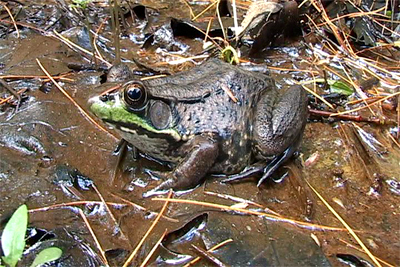
A Green Frog photographed near Granby, Connecticut. Photo by
Brian KleinmanDr. Skelly says he doesn’t know what to make of hermaphroditic Green Frogs he and his team have begun finding in the state. These are individual frogs with characteristics of both male and female frogs. Dr. Skelly warns that the data is provisional, but that he and his colleagues have found cases of Green Frogs with ovarian tissue in their testes, perhaps as many as 1 in 8, or up to 12% of individuals in some populations being affected.
Scientific analysis of such a finding remains a way off, but it raises important questions about amphibian health and human health--which are, for now, in greater supply than answers.
